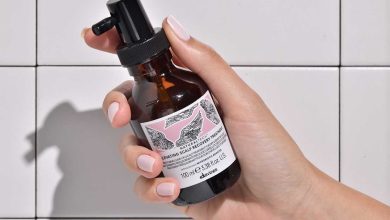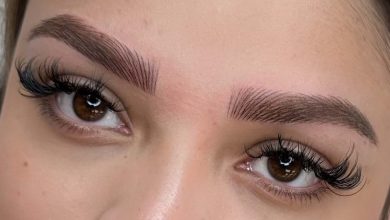Hydrafacial vs Traditional Facials: Benefits and Differences Explained

Hydrafacial and traditional facials are two types of skincare treatments that are often compared. While both aim to improve the skin’s appearance and health, they have different approaches and benefits. Understanding the differences between the two can help people make informed decisions about which treatment is right for their skin.
Hydrafacial is a newer treatment that has gained popularity in recent years. It uses a special device that cleanses, exfoliates, and hydrates the skin while also delivering antioxidants and other beneficial ingredients. Traditional facials, on the other hand, rely on manual techniques such as steam, extraction, and massage to achieve similar results.
When comparing Hydrafacial and traditional facials, it’s important to consider factors such as technology, effectiveness, and side effects. While Hydrafacial is generally considered to be more advanced and effective, traditional facials may be better suited for people with certain skin types or concerns. By weighing the pros and cons of each treatment, individuals can make an informed decision that meets their unique skincare needs.
Key Takeaways
- Hydrafacial and traditional facials are two types of skincare treatments that have different approaches and benefits.
- Hydrafacial is a newer, more advanced treatment that uses a special device to deliver cleansing, exfoliation, hydration, and antioxidants.
- When choosing between Hydrafacial and traditional facials, it’s important to consider factors such as technology, effectiveness, and side effects.
Comparing Hydrafacial and Traditional Facials
Hydrafacial and traditional facials are two popular treatments for improving the skin’s appearance. While both treatments aim to cleanse, exfoliate, and hydrate the skin, there are key differences in their techniques, treatment processes, and duration.
Key Differences in Techniques
Hydrafacial uses a unique technology called hydradermabrasion, which combines cleansing, exfoliation, extraction, and hydration all in one treatment. This technology utilises a vortex-like suction to remove impurities and dead skin cells while simultaneously infusing the skin with nourishing serums. On the other hand, traditional facials rely on manual techniques such as steam, manual extraction, and massage to achieve similar results.
Another key difference is that Hydrafacial uses acid peels to deeply exfoliate the skin, while traditional facials may use masks or scrubs to achieve the same effect. The acid peel used in Hydrafacial is gentle and is suitable for all skin types, making it an excellent choice for those with sensitive skin.
Treatment Processes and Duration
Hydrafacial is a relatively quick treatment, taking around 30-45 minutes to complete. It involves several steps, including cleansing, exfoliation, extraction, hydration, and protection. In contrast, traditional facials can take up to an hour or more, depending on the specific treatment.
Traditional facials typically begin with cleansing and exfoliation, followed by manual extraction to remove blackheads and whiteheads. Afterward, a mask or serum is applied to the skin to hydrate and nourish it.
In summary, Hydrafacial and traditional facials have their unique techniques and treatment processes. While Hydrafacial is a more advanced and efficient treatment, traditional facials can be tailored to the specific needs of the patient. Ultimately, the choice between the two depends on the individual’s skin type, concerns, and preferences. If you are looking for advice and an excellent hydrafacial treatment neutral bay, Sydney then Lab Skin Clinic come highly recommended.
Benefits and EffectivenessSkin Health and Appearance
Hydrafacial and traditional facials are both effective in improving the overall health and appearance of the skin. However, Hydrafacial has been found to be more effective in achieving immediate and visible results due to its advanced Vortex-Fusion technology that combines suction and specialized serums to cleanse, exfoliate, and hydrate the skin [1]. The treatment can help to reduce the appearance of fine lines, wrinkles, and skin texture issues, while also improving skin elasticity and restoring a healthy glow to the complexion.
Hydrafacial is also a highly customizable treatment that can be tailored to meet the specific skincare needs of each individual. Different serums can be used to target specific skin issues such as acne, hydration, and pore size, making it a versatile option for all skin types. Additionally, the treatment is gentle and non-invasive, making it a comfortable option for those who may be sensitive to other skincare treatments.
Suitability for Different Skin Types
Hydrafacial is suitable for all skin types, including sensitive skin, and can be customized to meet the specific skincare needs of each individual. The treatment is gentle and non-invasive, making it a comfortable option for those who may be sensitive to other skincare treatments. Traditional facials, on the other hand, may not be suitable for all skin types and can sometimes cause irritation or discomfort.
Hydrafacial also delivers a dose of antioxidant protection to the skin, which can help to protect against the signs of aging and improve overall skin health [4]. The treatment can help to hydrate and protect the skin, while also improving skin texture and restoring a healthy glow to the complexion.
In summary, both Hydrafacial and traditional facials can be effective in improving the health and appearance of the skin. However, Hydrafacial has been found to be more effective in achieving immediate and visible results due to its advanced Vortex-Fusion technology and customizable serums. Additionally, Hydrafacial is suitable for all skin types and is a gentle and non-invasive treatment that can be comfortable for those with sensitive skin.
Considerations and Side EffectsManaging Expectations and Aftercare
It is important to manage expectations when it comes to the results of a facial treatment. While a Hydrafacial can provide immediate results, a traditional facial may require multiple sessions to achieve the desired outcome. In addition, aftercare is crucial to maintain the effects of the facial. Clients should avoid touching their face, apply sunscreen, and moisturize regularly to keep the skin fresh and smooth.
Potential Risks and How to Mitigate Them
Like any cosmetic procedure, there are potential risks associated with facials. While a Hydrafacial is generally considered to have no downtime, some clients may experience redness, irritation, sensitivity, or discomfort. On the other hand, a traditional facial may cause breakouts due to the suction used to remove debris from the pores. To mitigate these risks, clients should communicate any concerns with their esthetician and follow their recommendations. It is also important to avoid any harsh products or treatments that can cause further irritation or congestion. Finally, clients should prioritize blood circulation by exercising regularly and maintaining a healthy diet to keep their skin glowing and rejuvenated.
Frequently Asked QuestionsWhat are the primary differences between a Hydrafacial and a traditional facial?
Hydrafacial and traditional facials differ in terms of the technology used and the processes involved. A traditional facial typically involves manual techniques such as steam, extraction, and massage to cleanse, exfoliate, and hydrate the skin. In contrast, Hydrafacial utilizes advanced Vortex-Fusion technology, which combines suction and specialized serums to deeply cleanse, exfoliate, and hydrate the skin.
Can Hydrafacial treatments offer benefits that traditional facials cannot?
Yes, Hydrafacial treatments can offer benefits that traditional facials cannot. The Vortex-Fusion technology used in Hydrafacial can penetrate deeper into the skin, providing a more thorough cleaning and exfoliation than traditional facials. Additionally, Hydrafacial treatments can be tailored to individual skin types and concerns, allowing for a more personalized treatment.
Are there any drawbacks to choosing a Hydrafacial over a conventional facial?
While Hydrafacial is generally safe and effective, it may not be suitable for everyone. Some people with sensitive skin may experience redness or irritation after a Hydrafacial treatment. Additionally, Hydrafacial treatments can be more expensive than traditional facials.
How does Hydrafacial compare to microdermabrasion in terms of results and processes?
Hydrafacial and microdermabrasion are both non-invasive skin resurfacing treatments that can improve the appearance of fine lines, wrinkles, and hyperpigmentation. However, Hydrafacial is generally considered to be more gentle and less abrasive than microdermabrasion, making it a better option for people with sensitive skin.
What can one expect to see in terms of results after a Hydrafacial treatment?
After a Hydrafacial treatment, one can expect to see an improvement in the overall texture and tone of their skin. Hydrafacial can help to reduce the appearance of fine lines, wrinkles, and hyperpigmentation, as well as improve skin hydration and firmness. Results can vary depending on individual skin type and concerns.
Is a Hydrafacial more effective than a photofacial for certain skin types or conditions?
Hydrafacial and photofacial are both effective treatments for improving the appearance of the skin. However, Hydrafacial is generally considered to be more versatile and can be tailored to individual skin types and concerns. Photofacial, on the other hand, is better suited for treating specific skin conditions such as sun damage and hyperpigmentation.
For medical Information on this topic please click here



